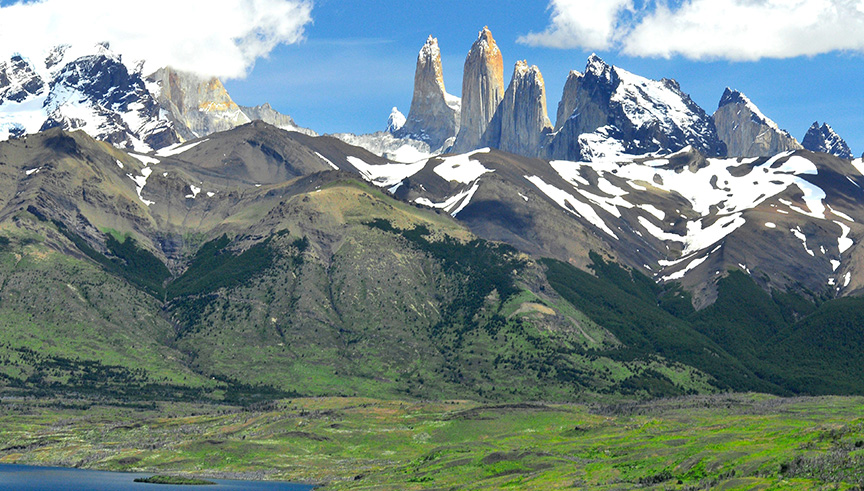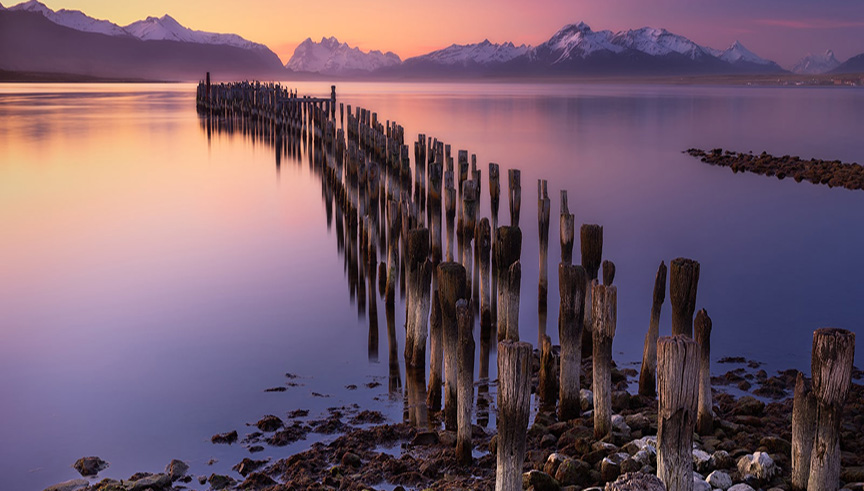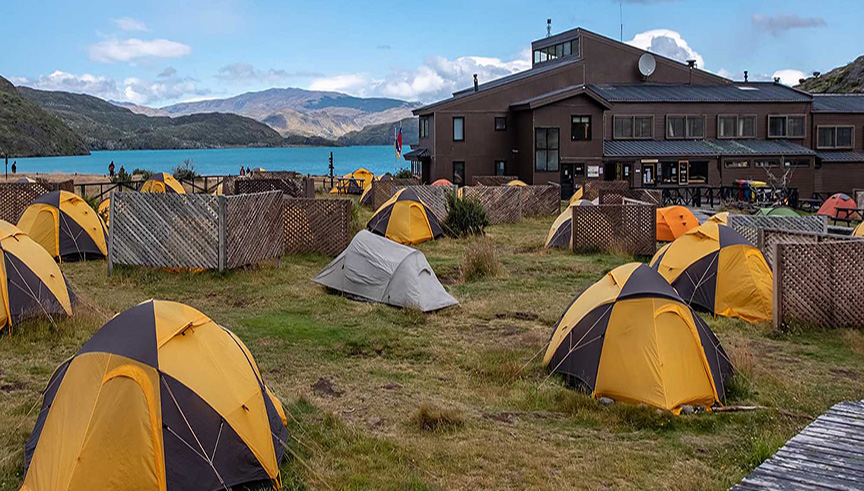
Torres del Paine National Park in Chile is renowned for its breathtaking natural beauty and diverse trekking routes, earning it a reputation as one of the world’s premier hiking destinations. This article will provide a detailed guide on how to experience this hiking paradise in August, offering insights into must-see spots, travel logistics, and essential tips for making the most of your visit.
1. Exploring Torres del Paine National Park
Torres del Paine National Park, located in the southern Patagonian region of Chile, spans approximately 242,000 hectares and is a treasure trove of natural wonders. The park’s iconic landmarks include the towering Torres del Paine (Paine Towers), the stunning Valle del Francés (French Valley), and the impressive Glaciar Grey (Grey Glacier). In August, the park transforms into a winter wonderland, with snow-covered landscapes offering a different but equally captivating experience compared to other seasons.
The park’s diverse scenery is nothing short of spectacular. The Torres del Paine are three sheer granite spires that rise dramatically above the surrounding landscape, creating a striking visual that is especially captivating in the early morning and late afternoon light. The French Valley, known for its unique topography and surrounding high peaks, is a prime spot for photography and outdoor exploration. Meanwhile, the Grey Glacier, with its striking blue ice, feels like stepping into a frozen fairytale.
2. How to Get to Torres del Paine National Park
Getting to Torres del Paine National Park involves traveling to either Punta Arenas or Puerto Natales, two key gateways to the park:
By Air and Bus:
- The most common route is to fly from Santiago to Punta Arenas, which takes approximately 3 hours and 30 minutes.
- From Punta Arenas, you can take a bus to Puerto Natales, a journey that lasts about 5 to 6 hours. Puerto Natales serves as a major departure point for travelers heading to Torres del Paine.
By Car Rental:
- For those who prefer a more flexible travel option, renting a four-wheel-drive vehicle in either Punta Arenas or Puerto Natales is a great choice. The drive from Puerto Natales to Torres del Paine takes around 2 hours, and the scenic route offers picturesque views along the way.
By Tour:
- If you prefer a hassle-free experience, consider booking a guided tour that includes transportation, a guide, and accommodation. These tours are particularly useful for those who want a comprehensive package without the need to arrange each detail individually.
3. W Trek Campsites and Refuges

The W Trek is one of the most famous trekking routes in Torres del Paine National Park, named for the “W” shape of the trail that traverses some of the park’s most spectacular landscapes. August’s winter weather provides a unique charm, with snow covering the mountains and a more tranquil atmosphere due to fewer visitors.
The W Trek is divided into several sections, each with its own campsites and refuges:
Section 1: Torres to French Valley
- The trek begins at the Torres Camp (Camping Torres), where you can set up tents or opt for pre-booked basic cabins. The facilities are straightforward but comfortable.
- From Torres, the trail continues to the French Valley, where you’ll find the Italiano Camp (Camping Italiano). This site provides tent rentals and basic amenities. Given the winter temperatures, booking a refuge is highly recommended for extra warmth and comfort.
Section 2: French Valley to Grey Glacier
- Continuing along the route, you’ll reach the Grey Camp (Camping Grey) near the Grey Glacier. The campsite is relatively simple but offers stunning views of the glacier. The nearby refuges are popular for their warmth and comfort, especially during the cold nights.
Section 3: Grey Glacier to Torres
- As you return to the Torres area, you’ll revisit the Torres Camp. This return leg allows you to experience different perspectives of the park’s landscapes, particularly the glacier and lake reflections.
Section 4: Return to Puerto Natales
- From Torres Camp, you’ll complete your trek and head back to Puerto Natales, where you can rest and prepare for the next leg of your journey.
4. W Trek Itinerary: Various Possibilities
The standard W Trek itinerary typically spans 4 days and 3 nights, but it can be adjusted based on your preferences and fitness levels. Here are a few possible itineraries:
Classic 4-Day Itinerary
- Day 1: Depart from Puerto Natales to Torres Camp, hiking for approximately 6 hours.
- Day 2: Trek to the French Valley and return to Torres Camp, with a total hiking time of about 8 hours.
- Day 3: Head to Grey Glacier, exploring the glacier and staying overnight at Grey Camp, with a full day of hiking around 8 hours.
- Day 4: Return from Grey Camp to Puerto Natales, completing about 6 hours of hiking.
Shortened Itinerary
- If you have limited time, a 3-day, 2-night itinerary is an option. This shorter route covers the highlights of the W Trek but may involve longer hiking days to fit the key sights.
Extended Itinerary
- For those looking to delve deeper into the park, extending your trek by an extra day allows for further exploration, including the O Circuit or other more remote areas.

August Travel Tips
Visiting Torres del Paine National Park in August offers a unique experience, with winter conditions adding a magical touch to the park’s already spectacular scenery. Here are some essential tips for making the most of your trip:
Clothing and Gear
- August is winter in Chile, so temperatures can drop below freezing. Pack warm clothing, including a waterproof jacket, insulated hiking boots, thermal gloves, and a hat. Waterproof and windproof gear is essential for staying comfortable.
Accommodation Booking
- Although August is considered the low season, it’s still wise to book accommodations in advance to ensure availability. This applies particularly to campsites and refuges, where prices and booking conditions can vary between peak and off-peak seasons.
Safety Precautions
- Winter weather can be unpredictable, with potential snowstorms and strong winds. Check the weather forecast and current trail conditions with the park’s visitor center before setting out. Carry emergency communication devices like a satellite phone or radio.
Food and Supplies
- Bring sufficient food and water for your trek, as park campsites provide only basic facilities. High-energy, easy-to-prepare meals are recommended. Since temperatures can cause food and water to freeze, carry some hot water and quick-cooking meals to stay well-fed.
Transportation Recommendations
- Plan your transportation carefully, as winter conditions may impact travel times. Choose reliable transportation services and confirm weather and road conditions before departure.
Torres del Paine National Park is a natural wonder, offering unparalleled hiking experiences regardless of the season. August’s winter landscape provides a unique opportunity to explore this breathtaking region with fewer crowds and pristine snow-covered scenery. With thorough preparation and a detailed itinerary, you can fully immerse yourself in the park’s majestic beauty and enjoy an unforgettable adventure in one of Chile’s most iconic natural landmarks. I hope this guide helps you plan an exceptional journey through Torres del Paine, filled with awe-inspiring sights and cherished memories.